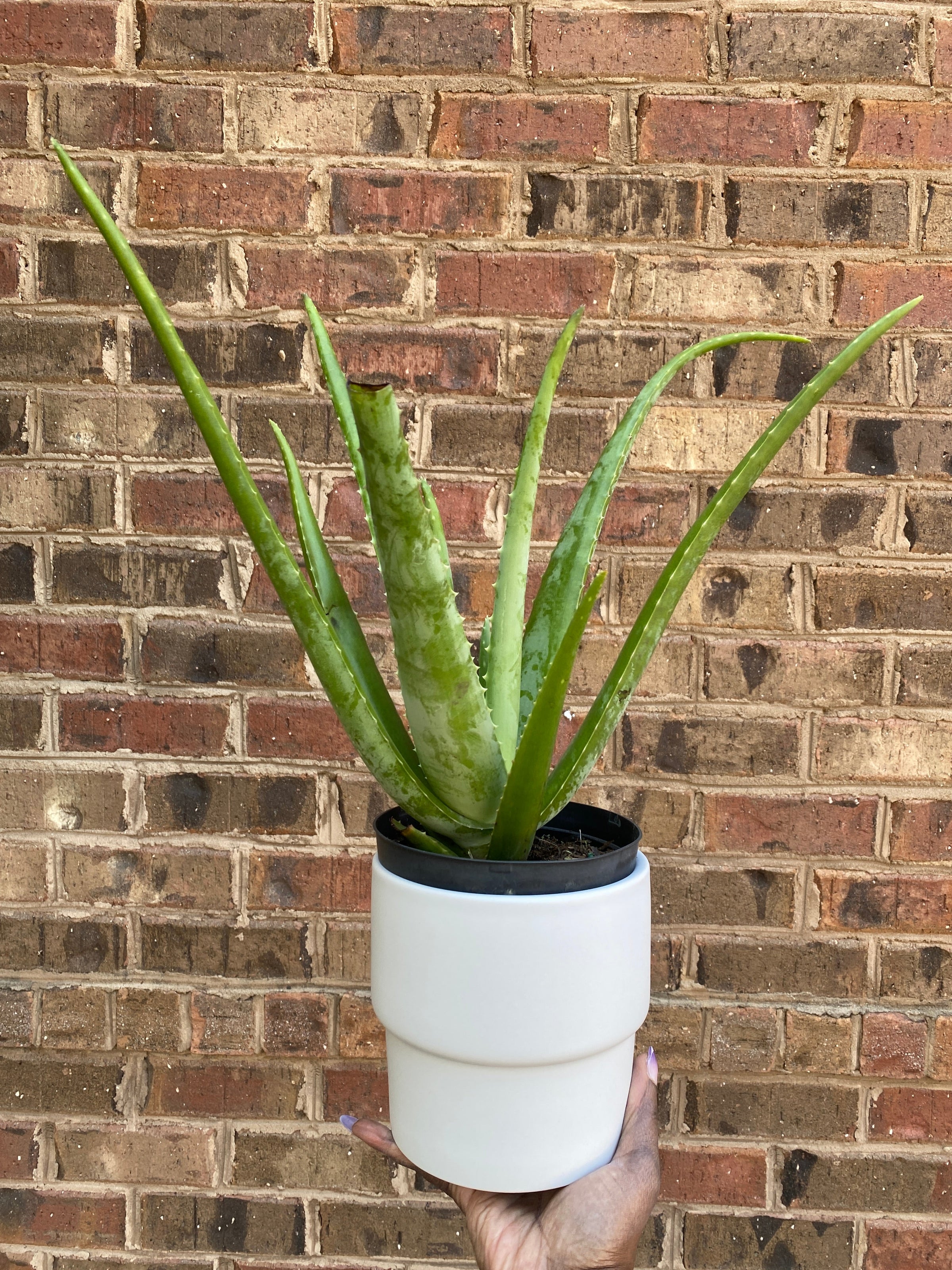7 Essential Aloe Vera Care Tips
-
Give It the Right Sunlight – Aloe plants thrive in bright, indirect light. A south- or west-facing window is ideal, but if trees or buildings block natural light, supplement with a grow light. Avoid direct, harsh sun for long hours, which can cause sunburn.
-
Water Sparingly to Prevent Root Rot – Water only when the soil is completely dry. Typically, this means every 2-3 weeks, but in winter, cut back to once a month. Overwatering is the #1 killer of aloe plants!
-
Use the Best Soil for Drainage – Always plant your aloe in fast-draining soil, like a cactus or succulent mix. If you’re using regular potting soil, mix in sand or perlite to improve drainage and avoid soggy roots.
-
Choose the Right Pot – A terracotta pot with a drainage hole is the best choice because it helps wick away excess moisture. Avoid glass or plastic pots, which hold too much water and can lead to root rot.
-
Feed with the Right Fertilizer – Aloe doesn’t need frequent feeding, but during the growing season (spring and summer), use a diluted succulent fertilizer once a month. Avoid heavy fertilizers that can burn the roots.
-
Trim and Repot When Needed – Remove damaged or yellowing leaves with sterilized pruning shears. If your aloe outgrows its pot or has too many pups (baby plants), repot in fresh soil for healthier growth.
-
Watch for Pests and Sunburn – Aloe plants can suffer from mealybugs or spider mites. Wipe leaves with neem oil or insecticidal soap if pests appear. If leaves turn brown or reddish, move your plant away from intense, direct sunlight to prevent sunburn.
If you’ve purchased an aloe leaf for skincare, here are two key care tips to keep it fresh and effective:
1. Store Aloe Properly for Maximum Freshness – Keep whole aloe leaves in the fridge, wrapped in a paper towel, for up to two weeks. If you've already extracted the gel, store it in an airtight container in the refrigerator for up to one week or freeze it in small portions for long-term use.
2. Test for Skin Sensitivity Before Use – Before applying aloe vera gel to your face or body, do a patch test on a small area of your skin (like your wrist) to check for any allergic reaction. This is especially important if you have sensitive skin or are using fresh aloe with aloin, which can be irritating for some people.
*For best results, always use 100% pure aloe vera with no added fragrances, dyes, or alcohol.



